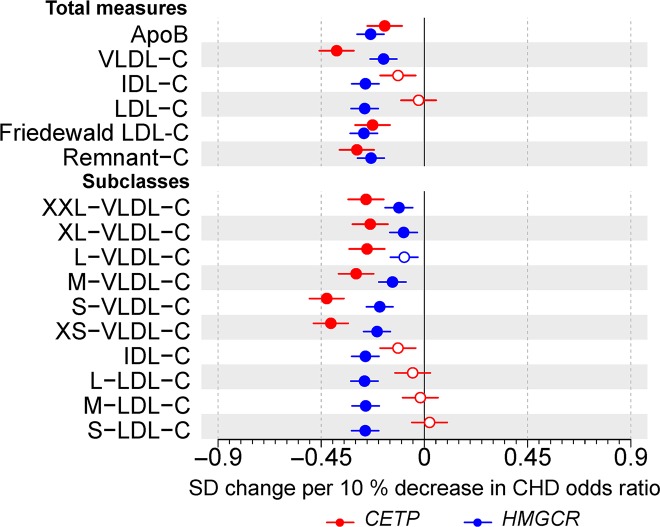Fig 1.
Associations of genetic variants in CETP rs247617 (red) and HMGCR rs12916 (blue) with circulating apolipoprotein B and cholesterol concentrations in size-specific apolipoprotein B particles. Estimates represent the standardized difference in lipoprotein trait, with per allele associations scaled to a 10% lower relative risk of CHD. Analyses were adjusted for age, sex, genotyping batch, and 10 genetic principal components. The circles refer to the effect estimates and the horizontal bars to the 95% CIs. Closed circles represent statistical significance of associations at P < 0.002 and open circles associations that are nonsignificant at this threshold. The lipoprotein subclasses are defined by particle size [17–19]: potential chylomicrons and the largest VLDL particles (XXL-VLDL; average particle diameter ≥75 nm); 5 different VLDL subclasses, i.e., very large (average particle diameter 64.0 nm), large (53.6 nm), medium (44.5 nm), small (36.8 nm), and very small VLDL (31.3 nm); IDL (28.6 nm); and 3 LDL subclasses, i.e., large (25.5 nm), medium (23.0 nm), and small LDL (18.7 nm). Underlying data can be found in S1 Data. ApoB, apolipoprotein B; C, cholesterol; CHD, coronary heart disease; IDL, intermediate-density lipoprotein; LDL, low-density lipoprotein; VLDL, very-low-density lipoprotein.

